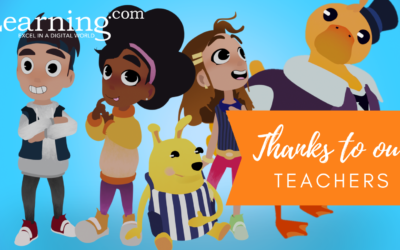Computational thinking has become important to teaching problem solving in education because it empowers students with processes to develop strategic solutions to complex problems, essentially “leveling up” their skills, or creating algorithms that can make future processes more effective. This enables students to take on more complex challenges and prepare for real-world applications.
Decomposition in Computational Thinking
While the process of computational thinking is multifaceted, there is one key to computational thinking that is essential for success: decomposition. Decomposition is the process of breaking a complex task or problem into smaller, more manageable pieces. From this decomposition, students can eliminate unnecessary information, identify patterns and begin the process of identifying which parts of the problem are most important, how to solve or complete each step, and how those parts can be put together for a clear and unified step-by-step solution.
Why is the Decomposition Technique Required in Computational Thinking?
The technique of decomposition is required in computational thinking because it breaks complex tasks into subtasks while developing a sequentially-based understanding of the problem. This allows unnecessary information to be discarded, patterns to be identified, relevant information to be extracted and the process of step-by-step resolution to be defined for a more effective problem-solving process.
By definition, computational thinking is the process of tackling complex problems and finding a clear, step-by-step solution that can be replicated. Decomposition, therefore, is essential to this process as it includes breaking a task into several sub-tasks, helping to align the task to a step-by-step solution.
Another reason decomposition in computational thinking is important is because it allows each subtask to be examined more closely. This not only helps to categorize information as essential or non-essential, but also empowers the problem-solver with a better ability to analyze each specific part of the task or challenge to more effectively develop a reasonable solution.
Examples of Decomposition in Computational Thinking
Below are some real-world examples of utilizing decomposition in computational thinking:
- You have to clean your house. Instead of facing the task as a whole, you practice decomposition by breaking the task into a to-do list with multiple subtasks.
- To build shelves for a storage space, you practice decomposition by measuring the space, creating a blueprint or plan to determine the size of the shelves and the materials you need to accomplish the task. Next, you purchase the supplies and cut the lumber to size, then install one wall of shelves at a time.
- In science, to prove or disprove a hypothesis, you practice decomposition by creating subtasks including background research, observation, generating a hypothesis, determining which variables to test, performing experiments and drawing a conclusion.
Final Thoughts
Consider how often computational thinking appears in your everyday life. Do you naturally use decomposition and computational thinking to resolve a challenge? For more information about computational thinking and how they apply to students, explore some of our most recent articles:
6 Reasons Coding is Important for Students
In recent years, it has become increasingly important to include introductory coding skills as part of technology curriculum for K-12 students. Yet the importance of these lessons to modern student curriculum extends far beyond the coding space. Why is Coding...
What is ISTE & Why Do ISTE Standards Matter?
If you are in the education industry, you may be familiar with the ISTE standards logos that appear on some products and programs related to digital literacy and technology curriculum. But what, exactly, is ISTE and how do their standards apply to learning? In this...
Education: Lighting a Fire
This week is National Teacher Appreciation Week. We at Learning.com are honored to recognize the efforts of our nation’s teachers! For me, this is a very personal matter. I grew up in a family of educators—both of my parents were school teachers, and many others in my...
These Teachers Made Us Who We Are ❤️
At Learning.com, our team is dedicated to helping educators by making it easier for them to equip students with the digital skills necessary for future success. But what about the teachers who enabled our own success? In honor of Teacher Appreciation Week, here are...
Themes that Stood Out at ASU-GSV 2022
Earlier this month, I attended the ASU-GSV Education Summit in San Diego, California. The event, in its 13th year, is organized by Arizona State University and Global Silicon Valley (a venture capital firm which focuses on investments into the education technology...
Behind the Scenes: Writing an Instructional Video
From Bean City’s sidewalks to the trees of Tech Grove, Learning.com characters live fascinating lives. As their stories unfold, I find them taking on attitudes and values of their own. Behind each video’s script is an incredible collaborative process that employs a...
What You Need to Know About ISTE Standards
If you’ve been doing your research on technology curriculum for K-12 students, you’ve probably run into the term “ISTE Standards,” or even seen the ISTE Seal of Alignment on some resources and solutions. But what, exactly, are ISTE Standards and what do they mean for...
6 Most Important Digital Skills for K-12 Students
The world is becoming increasingly technology-based, which makes it more important than ever for students to master digital skills that will support them now and in the future. Even pre-COVID-19, many schools had digitally based learning programs to support...
Podcast: On Balance with Keith Oelrich
Learning.com CEO Keith Oelrich recently chatted with podcast host Dr. Rod Berger about the digital divide, and the importance of digital skills all across the lifespan. In just 25 minutes, their wide-ranging conversation covers the vital role of digital skills as more...
Which Computer Fundamentals Skills are Important for Students?
As technology continues to increase in prominence in our educational, professional and social worlds, it’s more important than ever that students develop fundamental computer skills so they may have a strong foundation for future development. Mastering computer...
Online Assessments: Helping Students Think about Answers, Not their Fingers
Today’s students are often described as “digital natives,” living with devices in their hands from pretty much the time they are able to hold them. But, data shows that this doesn’t necessarily mean they have the digital skills necessary to succeed in online...
What is Included in Technology Curriculum for Students?
While each technology program for students is unique, there are key areas that the curriculum should cover. The goal of technology curriculum for K-12 students should be to improve their digital literacy and enable them to confidently perform common tasks using...

Learning.com Team
Staff Writers
Founded in 1999, Learning.com provides educators with solutions to prepare their students with critical digital skills. Our web-based curriculum for grades K-12 engages students as they learn keyboarding, online safety, applied productivity tools, computational thinking, coding and more.













